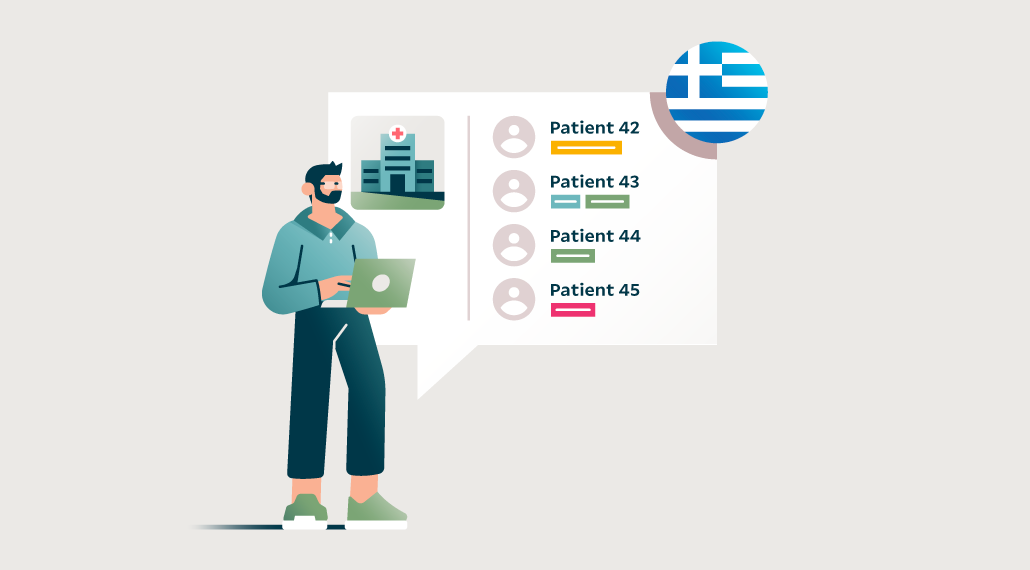February 24th, 2023
How to Write a Better Clinical Trial Protocol: Make These 5 Changes to Your Schedule of Activities
By Sarah dePontbriand, Manager of Trial Design at OneStudyTeam

Protocol development is a critical step in clinical trial setup. With a well-written protocol to guide their work, site teams around the world can work on the same trial in a way that is uniform and precise, resulting in the most accurate data for investigational product review. To set sites – and, ultimately, entire trials–up for success, it’s up to sponsors to be clear and specific when writing clinical trial protocols.
If you are working with a technology vendor, specificity in protocol language can also support digital automations. For example, the StudyTeam™ enrollment performance management platform contains functionality to display projected visit dates. Site teams are able to see the exact protocol-defined visit window and schedule the visit, which saves time and reduces the possibility of protocol deviations. As a Senior Trial Design Associate at OneStudyTeam, my job is to assess protocol visit schedules and configure them in StudyTeam.
A common mistake I see repeatedly is a lack of clarity in the Schedule of Activities (or protocol-specific equivalent).
What is a Schedule of Activities in clinical trials?
A Schedule of Activities is a table found in clinical trial protocols that provides a visualization of tasks and milestones that are critical to the execution of the trial. Typically, all required study visits and their associated study activities are listed and divided into study periods such as screening, treatment, follow-up, and others. Activities can include medication review, informed consent, administration of investigational products, and more. Site teams rely on this schedule to care for patients while adhering to the protocol-defined requirements.
A lack of clarity in the Schedule of Activities can result in lengthy follow-ups with sponsors to address questions. If vendors who specialize in visit schedules have these clarifying questions, sites will, too. This results in sites following up with their clinical research associate, leading to more work and lost time–whether that time is lost before trial startup or during the trial. There is also a larger risk involved: If site staff interpret the protocol incorrectly, participants could receive the investigational product at the wrong time.
To reduce confusion for everyone and set trials up for success, here are five easy changes sponsors can make to their Schedule of Activities.
(1) Clarify exactly how many days are in a month and a year
Often, protocols will state that visits should happen weekly, monthly, or yearly. Weekly references are fairly clear, as every week contains 7 days. However, monthly and yearly references are less clear and leave room for subjective protocol interpretation. Consider this scenario, with a “monthly” follow-up visit listed in the protocol:
- Site A assumes that every follow-up visit should occur on the second Tuesday of every month, because that’s when the first one occurred.
- Site B assumes that every follow-up visit should occur on the 7th of the month, because that’s when the first one occurred.
- Site C assumes that follow-up visits should occur every 28, 30, or 31 days, depending on the month.
- Site D assumes that follow-up visits should occur every 28 days, because this is an oncology protocol with 28-day treatment cycles.
In this example, that leaves four sites on the same trial scheduling follow-up visits on four different schedules, due to protocol vagueness. Similar issues can arise with “yearly” visits.
To avoid this issue, specify how these calculations should be made. Vague references to time frames put the onus on your partners and sites to interpret what a “month” or a “year” is, and can ultimately result in sites working on different schedules for the same trial.
(2) Specify the precise milestone that triggers a visit or a set of visits
Many protocols include multiple study periods, but not all protocols define when one study period ends and the next begins. For example, a common protocol phrase is: “follow-up visits will occur every 12 months for 5 years.”
To clarify what this means, consider these recommendations. First: Get specific about months and years. Second: Specify when the first follow-up visit should occur–whether that be 12 months after the last dose, the safety follow-up visit, or some other milestone.
Naming the milestones that all sites should adhere to (for example, “52 weeks after the last dose of IP”) can not only limit variations in endpoint data collected by trial sites, but also ensures that all sites are conducting visits in the correct timeframes.
(3) Be exact about visit window tolerances
Avoid using the word “approximately” in lieu of a visit tolerance. Providing an exact visit tolerance, such as “4 weeks +/- 5 days,” will reduce confusion for sites. A vague tolerance just increases the workload for the site team, who then has to subjectively determine an acceptable range. This tees up your trial for schedule differences across sites.
If there is minimal concern about exactly when certain visits should occur, set a large visit tolerance. Defining the timeframe puts everyone on the same page.
(4) Specify instances when a delay in a visit should cause a delay in other visits
While sponsors tend to get specific about screening windows, the same is not always the case for treatment phase visits, particularly in oncology protocols. Say C2D1 and C2D8 happened on time, but C2D15 occurred out of its window because a patient was temporarily experiencing an adverse effect. Does C2D22 get delayed, or should it still occur at its planned time relative to C2D1? What about C3D1?
When writing a clinical trial protocol, make sure to include information like: “If a treatment phase visit is delayed by x days, delay all subsequent treatment phase visits by x days.” The same goes for follow-up calls. Try using language like: “FU1 occurs 12 weeks (+/- 1 week) after last dose, FU2 occurs 12 weeks (+/- 1 week) after FU1, etc.”
This may sound granular, but details matter. Depending on the tools sites are using to calculate ranges, this could ultimately cause big differences in visit timing across your trial.
(5) Include all information about patient visits in one section
There’s no standard format for a protocol document layout that's used by all sponsors, so it’s not uncommon for site staff to comb through the protocol to find all of the relative information they need to schedule patient visits accurately. Notes about visit tolerances or follow-up frequency may be sprinkled throughout the protocol document.
Think of the Schedule of Activities (or your protocol’s comparable section) as a “one-stop-shop” that includes all relevant visit scheduling information. Creating a clear, useful resource for sites to easily reference saves valuable time that the site staff can then spend on the participants they are caring for.
The benefits of getting specific during clinical trial protocol development
StudyTeam’s Visit Schedule feature is extremely popular for sites, largely because our team takes on the time and brainpower needed to determine when participants need to be scheduled for visits. This saves sites time, effort, and guesswork when they log into StudyTeam to manage visits – reducing clinical trial site burden.
While there is no such thing as a perfect protocol, everyone benefits from clearly written, specific protocols, starting with the Schedule of Activities. When sponsors write a clearer schedule, they spend less time answering questions from their sites and technology vendors, while knowing that their trial is being carried out consistently across site locations. Technology vendors can easily and accurately activate scheduling automations into enrollment platforms and clinical trial management systems. Site teams can more efficiently schedule patient visits with confidence, without the burden of guesswork. And, most importantly, patients receive the care and communication they need, on time.
Want to see our Visit Schedule feature in action? Schedule a free demo.
Related Posts

How Does a Trial Manager in Greece Improve Clinical Trial Operations with StudyTeam®?
Dimitris Tziogas, local trial manager at a biotechnology company in ...
Read More
How to Address Key Clinical Trial Challenges, According to Clinresco Centres in South Africa
There’s no single solution to overcoming a research site’s specific ...
Read More
3 Clinical Trial Billing Challenges Research Sites Solve with StudyTeam
Challenge 1: Complicated coverage analysis Challenge 2: Tedious budgeting ...
Read More


.png?width=64&name=OST%20Transparent%20(1).png)